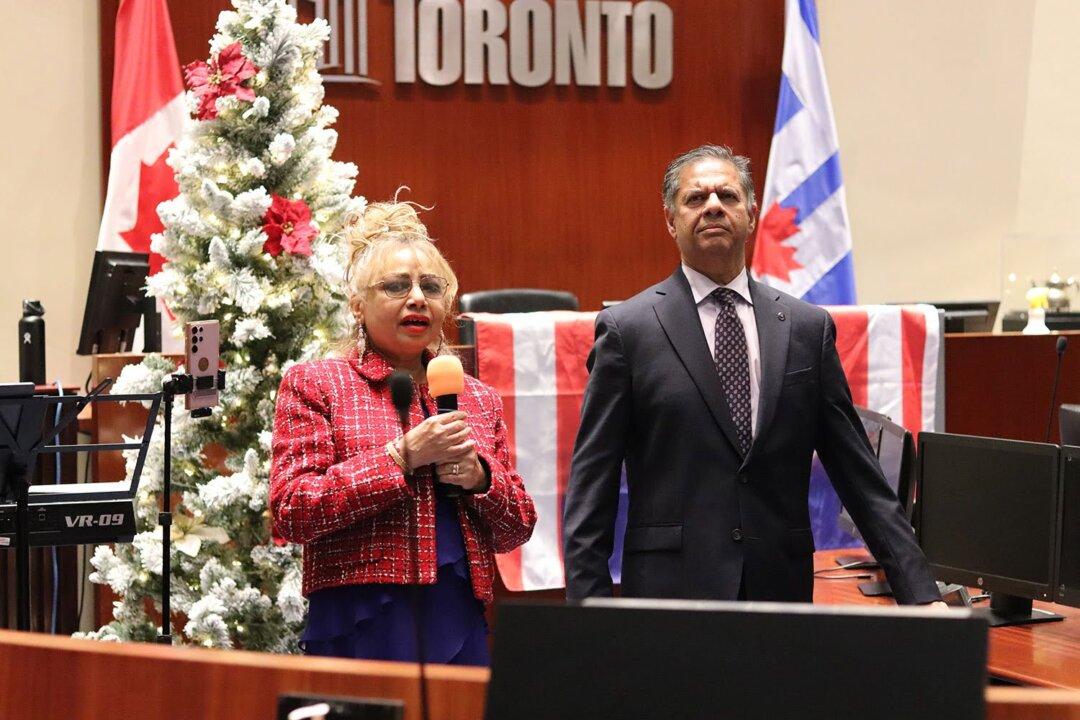Soaring house prices have made buying a home difficult for Canadians, a situation experts attribute to various factors including policies at the federal, provincial, and municipal levels.
Carleton University business professor Ian Lee is a former Bank of Montreal mortgage manager and pays close attention to housing markets and policy.
“The housing crisis is not artificial, it’s very real. And there’s a fundamental mismatch between supply and demand—there are far fewer houses being built than there is demand for houses, and this has been documented report after report,” Lee said in an interview.
A Scotiabank report shows that Canada currently has the lowest number of housing units per 1,000 residents of any G7 country, at 424 homes. It would need 1.8 million more homes for Canada to reach the G7 average of 471 homes per 1,000 residents.
From 2000 to 2020, Canadian house prices rose 168.4 percent, by far the highest among the G7 countries and more than triple the U.S. increase of 54.9 percent.
“The problem has been exacerbated by really, really cheap money, but that’s not the number one driver,” Lee said.
“Provincial governments have exacerbated it by putting rent controls on, or threatening to, which drives people, investors, out of the rental market. That in turn creates shortages. And so people say, ‘Gee whiz, the rents have gone through the roof. Why don’t I just go and buy property?’”
Municipal regulations have also made things worse, he adds.
“I’ve actually talked to planners and I’ve talked to environmentalists. They said, ‘Well, look, we’re going to stop urban sprawl.’... Urban sprawl is code talk to say that they don’t want young people and immigrants to go up to the edges to buy affordable housing,” Lee explains.
“You don’t [stop it]. All you do is cause people to jump over the boundary and go to … bedroom communities.”
In Vancouver, real estate broker David Hutchinson is trying to sell an old home that would normally be ideal to replace with duplexes, each with a lock-off rental suite.
“Should be a no-brainer. But it’s just all the red tape and costs,” Hutchinson said in an interview.
Stress Test, Mortgage Insurance Rule Changes
The Canada Mortgage and Housing Corporation (CMHC) recently made it easier for borrowers to get federal mortgage insurance, reversing the stricter rules it imposed a year ago. However, the national housing authority explained that this is mainly to correct the mistake it made that resulted in loss of mortgage insurance market share to private-sector insurers.Effective July 5, the minimum credit score a borrower needs to qualify for the CMHC’s mortgage insurance dropped from 680 to 600. In addition, the CMHC will allow a borrower’s gross debt-service (GDS) ratio to be as high as 39 percent, instead of 35 percent, and total debt-service (TDS) ratio to be as high as 44 percent, instead of 42 percent.
The GDS ratio refers to the proportion of a household’s gross income being used to pay mortgage and other housing-related debt. The TDS ratio is the proportion being used to cover housing costs as well as other debt payments.
The federal government’s mortgage stress test was also changed recently, but it’s to raise the bar for qualifying for a mortgage. Whereas the minimum qualifying rate for a mortgage was previously 4.79 percent, on June 1, it rose to 5.25 percent or the borrower’s mortgage contract rate plus 2 percent, whichever is higher.
Lee said the stress test was implemented “for cosmetic purposes, for political purposes, to show that ‘we’re taking care of the problem’” even though it was never acute.
‘Not a Great Market' for Canadian Homebuyers
One change Hutchinson would welcome is a federal foreign homebuyer’s tax. During a B.C. campaign stop in 2019, Prime Minister Justin Trudeau promised to tax “non-resident, non-Canadian” buyers 1 percent on property purchases. That year NDP Leader Jagmeet Singh called for a 15 percent tax on foreign ownership.“The federal government at some point has to stop dragging its feet and emulate the B.C. government and impose a sound, enforceable foreign buyer tax,” Hutchinson said.
In 2016, British Columbia slapped an extra 15 percent property transfer tax on non-Canadian and non-permanent resident homebuyers in Metro Vancouver, and in 2018 increased it to 20 percent and expanded it to other parts of B.C. In 2017, Ontario similarly imposed a 15 percent tax on non-resident real estate purchases in the Greater Golden Horseshoe area, which includes the Greater Toronto Area.
The tax seemed to have a marked effect. Juwai.com, a real estate portal that connects interested buyers in China with international listings, found that in 2018, Chinese buyers’ interest in Canadian properties dropped in Vancouver and Toronto yet grew by nearly 400 percent in Halifax, over 230 percent in Calgary, and around 36 percent in Montreal.
Meanwhile, federal momentum for a foreign owner tax has given way to a preference for foreign investment. Adam Vaughan, the parliamentary secretary for housing, recently told TV Ontario host Steve Paikin, “We have a very good system of foreign investment creating a lot of new housing in Canada as we add immigrants and grow the population.”
The MP for Spadina-Fort York and former Toronto city councillor said Canada has become “a very safe market for foreign investment but not a great market for Canadians looking for choices around housing.”





